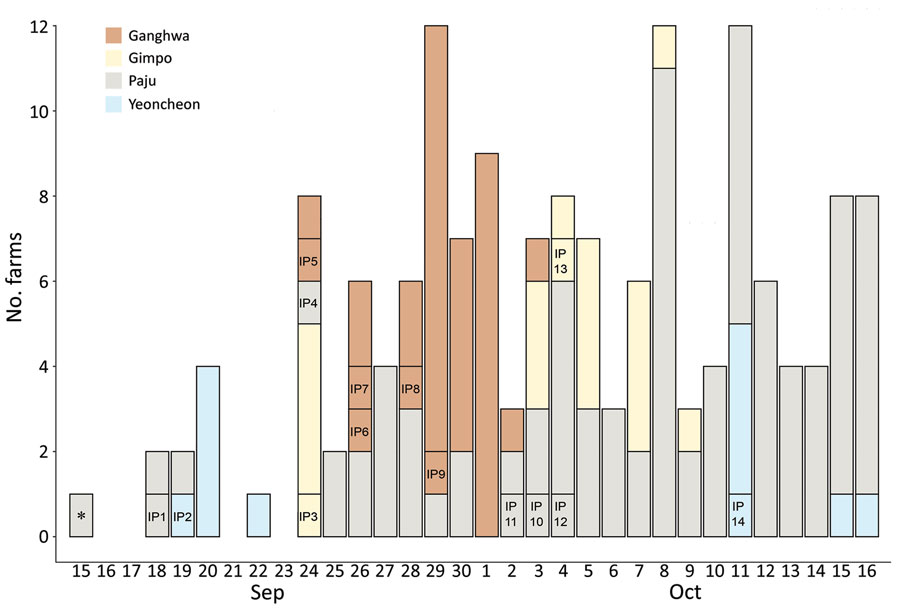Volume 27, Number 7—July 2021
Research
Transmission Dynamics of African Swine Fever Virus, South Korea, 2019
Figure 3

Figure 3. Number of farms registered in the government pig farm database that were emptied during the study period by culling or government purchase, South Korea, 2019. IP labels are shown on the day they were culled. Herds located within a 3-km radius around IPs and herds with an epidemiologic link to IPs (e.g., same ownership) were culled within 3 days after confirmation of African swine fever virus infection in IPs. As the epidemic developed, the government further depopulated remaining herds in affected municipalities as a preventive measure. *One farm stopped rearing pigs for reasons not associated with the epidemic. IP, infected premises.
1These authors contributed equally to this article.
Page created: May 14, 2021
Page updated: June 16, 2021
Page reviewed: June 16, 2021
The conclusions, findings, and opinions expressed by authors contributing to this journal do not necessarily reflect the official position of the U.S. Department of Health and Human Services, the Public Health Service, the Centers for Disease Control and Prevention, or the authors' affiliated institutions. Use of trade names is for identification only and does not imply endorsement by any of the groups named above.